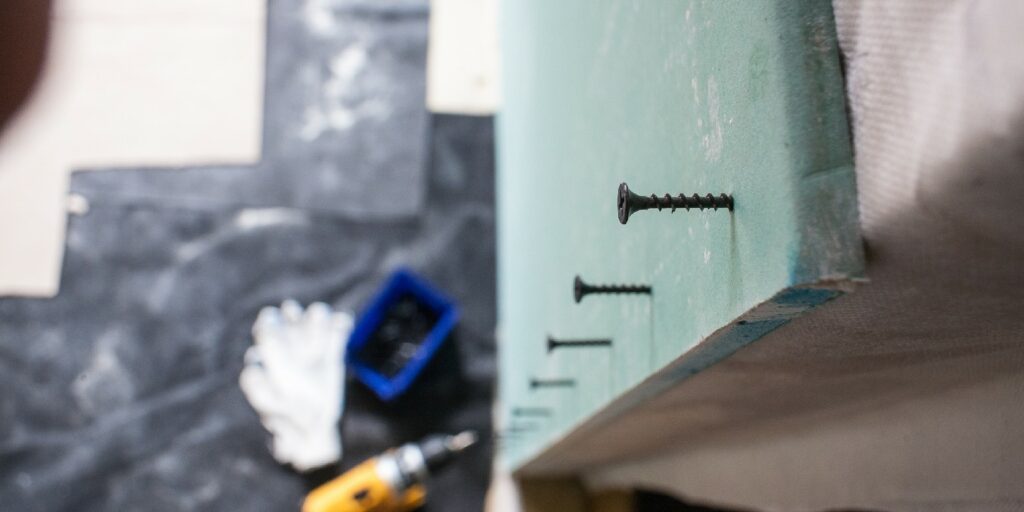Why Drywall Screw Spacing Matters: Tips for Proper Installation

Installing drywall is an important part of any renovation or construction project. Getting the drywall in place is just the first step, though; in order to make sure the drywall is properly secured and firmly in place, the screws need to be spaced properly. When it comes to screw spacing, it’s crucial to remember that there is no one-size-fits-all solution.
In this post, we’ll discuss why drywall screw spacing matters, and provide tips to help ensure that you properly install your drywall. We’ll also cover some common mistakes to avoid to help ensure you get the job done right. When in doubt, you can also hire a professional. So, let’s get started.
Background and Purpose of Drywall Screw Spacing
Drywall is used to finish interiors in residential, commercial, and industrial buildings. It is important to ensure the proper spacing of drywall screws when installing drywall to protect against structural problems, such as bending, flexing, and cracking. Additionally, the correct spacing of drywall screws improves the overall look of drywall and creates a smoother finish.
Understanding Drywall Screw Spacing
The basic purpose of drywall screw spacing is to ensure the drywall is properly secured to the wall studs or joists behind it. The recommended spacing for drywall screws depends on the size of the drywall panel being installed. Generally speaking, drywall screws should be placed 8-16 inches apart on each side of a 4×8-foot sheet of drywall. If using a larger sheet of drywall, such as a 4×10 or 4×12, then the screws should be spaced 10-20 inches apart.
Factors That Impact Drywall Screw Spacing
The size and weight of the drywall panel will determine how far apart the screws need to be spaced from one another to properly secure it to the wall studs or joists behind it. Additionally, environmental factors such as humidity and temperature can also impact how far apart screws need to be placed, as these conditions can affect how well a screw adheres to a wall stud or a joist.
Drywall Screw Spacing Regulations
Though there are general guidelines for how far apart drywall screws should be spaced, it is important to refer to local building codes to ensure that you are meeting all necessary guidelines on screw spacing related to your project. In some cases, local building codes may require that specific screw sizes or types be used, or that a minimum number of screws should be used for each wall stud or joist in order for an installation to be considered legally compliant.
Tools Needed for Professional Installation
In order to install drywalls correctly, certain tools are necessary for proper installation — namely, a drill or driver and various drill bits, a stud finder, a tape measure, and a claw hammer. It is also important to have self-tapping screws specifically designed for use with drywall available at your disposal when installing the pieces.
Tips for Proper Installation
To install your drywall correctly with proper screw spacing, here are some tips:
- Before installation begins, measure out where each wall stud or joist is located so you know where each screw should go once you begin drilling into the wall
- When drilling holes into wall studs or joists, make sure that they are deep enough so they can hold at least two full turns of each screw
- Ensure that each self-tapping screw is securely affixed by hammering it in — gently but firmly — with your claw hammer
- Finally, once all screws have been inserted in their respective holes and have been tapped in with your hammer, use a leveler across the wall studs or joists to make sure that your newly installed drywall is flush and ready for taping and finishing work.
Common Mistakes To Avoid
When installing your drywalls with proper screw spacing, certain mistakes should be avoided at all costs:
- Do not over-tighten screws
- Do not use too few screws
- Do not use large head wood screws
- Do not drive nails into existing walls without first adhering spacers or shims beneath them
- Do not install sheets of drywall without first double-checking the measurements
- Do not forget to insulate between layers of new walls before beginning installation work
- Do not skip over crucial steps like checking for moisture before starting the installation
Conclusion
Screwing drywall into place is important for a number of reasons, from longevity to structural durability. By avoiding these common mistakes and following these tips as outlined above, you can ensure that your newly installed drywall will not only look great but will also stand strong for years to come!
